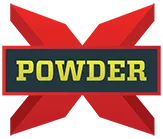
How to Properly Prepare a Metal Surface for Powder Coating
Before powder ever touches a part, before you even flick the switch on your gun, the real finish begins with surface prep. Metal surface preparation for powder coating is crucial because it’s not glamorous, but it’s non-negotiable. Because when prep fails, powder fails. And failure? That’s not in your playbook.
So, let’s walk through the exact steps to prepare metal for powder coating, the same steps professionals, military contractors, and elite finishers rely on to get show-quality results that last.
Step 1: Inspect the Substrate
Before anything else, look at what you’re working with. Is it new steel? Cast aluminum? A rusted bracket or an oily used part? Each substrate has different needs. Paint, rust, mill scale, weld spatter, grease, or oils must be identified, because every contaminant is a liability.
“You can’t coat what you can’t clean. The enemy isn’t your gun settings, it’s the residue you ignored.” – Joey Golliver
Step 2: Mechanical Cleaning (if needed)
Start with mechanical prep if there’s heavy corrosion or coatings present.
Sandblasting or media blasting helps etch the surface and remove rust or old coatings.
Use the right media (like aluminum oxide or garnet) and ensure your blast profile is consistent, typically between 1.0–2.5 mils for most coatings.
Avoid over-blasting, which can warp thin metals or embed contamination.
Step 3: Chemical Cleaning
Even new parts aren’t “clean.” Mill oil, stamping lubricants, and shop grime leave residue.
This step removes oils and soils and prepares the metal for conversion coating:
Use an alkaline cleaner followed by a rinse.
For best results, consider an iron phosphate or zinc phosphate pretreatment, depending on the corrosion resistance required.
Rinse thoroughly. Improper rinsing can cause “fisheyes” or poor adhesion.
Step 4: The Water Break Test
This is your final checkpoint. Water should sheet evenly across the part without beading. If it beads? The part isn’t clean. Repeat your cleaning until it passes.
Sheeting water = clean
Beading water = contamination
Step 5: Dry Completely
Residual moisture is another silent killer of quality. Bake the part briefly or use forced air to ensure the surface is bone dry. If water hides in welds or seams, it will outgas in the oven and you’ll see pinholes or blisters in the finish.
Step 6: Handle with Care
Once clean and dry, don’t touch the part with bare hands. Always wear nitrile gloves. Finger oils and skin acids can undo all your prep work in seconds.
Step 7: Grounding and Hanging
Hang your parts in a way that ensures:
Good electrical ground contact
Minimal rack marks
No metal-on-metal vibration
Use stainless or copper grounding hooks, and test your ground. You’re aiming for <1 ohm of resistance between your part and ground.
Why This Process Matters
Every blister, chip, or adhesion failure you’ve ever seen? It probably started here, with prep shortcuts or missed contamination. The steps above aren’t optional; they are the foundation of every flawless finish.
And when you get prep right? You don’t just coat parts, you build a reputation.
